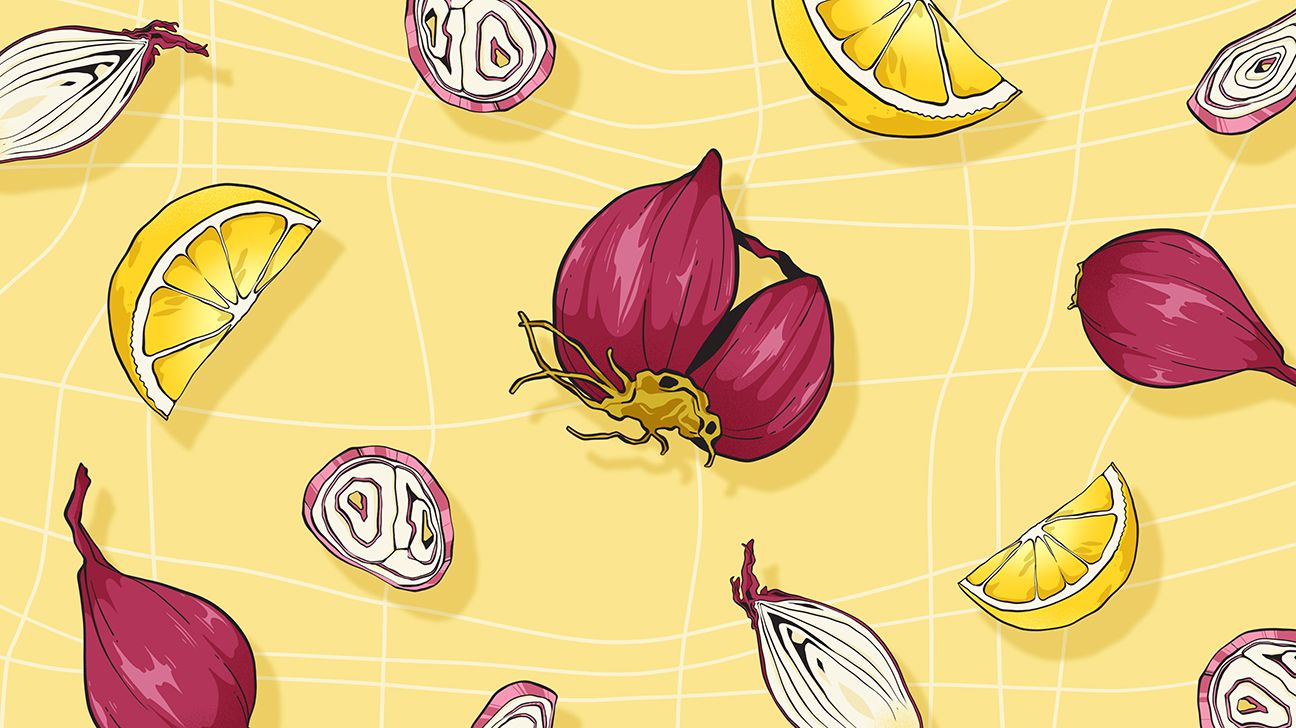
My family was always a “no raw onions” family. Those funky little alliums never had a chance. My parents ordered salads and burgers without onions, and I opted for the same out of some kind of sick anti-onion solidarity. We only ate onions cooked down to within an inch of their lives. But this was before I met the macerated shallot.
Shallots were a semi-foreign ingredient to me. They felt fancy in a way I did not. They resembled onions, so I shied away from them. But a few years ago, I started packing myself salads for lunch (not to brag) and wanted a new dressing. I’d never loved dressings, so the bar was pretty low, but I had enjoyed this mustard vinaigrette I’d eaten while studying in France, so I looked for similar recipes. What I found was a revelation.
The first step in the recipe was to macerate minced shallots, a technique that, I’ll be honest, I had to look up. Basically, “macerate” just means leaving the minced shallots in an acid (like lemon juice or vinegar) for a few minutes.
It sounds so mundane, but in those 5 or 10 minutes, the harsh, inedible bite of the raw shallot magically disappears. It becomes crisp and acidic and doesn’t make you feel like you just fell face-first into an onion. The brightness of the shallot almost disperses into the vinegar so that its bite comes in small, delicate doses. This mild pickling is the key to, well, everything.
The day after I made my first jar of vinaigrette, I shook it up at lunch and dumped it on my salad, still mostly expecting to end up picking around the shallots. But the dressing was the star. It improved every part of the salad.
The butter lettuce was so delicate compared to the vinaigrette, and the creaminess of the hard-boiled egg was perfectly balanced by the small doses of crunchy acidity. The beans and beets felt so much more luxurious. My deskmate laughed and told me I looked like I was going to cry with joy.
I made that vinaigrette every single day that week and then every single day the next week. I was no longer making dressing for the salad, I was making salad for the dressing.
This technique has (not to be too melodramatic…) changed my life. Now I leave all kinds of raw shallots and onions to macerate in lime or lemon juice for salsas and different kinds of vinegar for dressings. My parents call this “The Good Dressing” and actively request it.
It’s a wonderful addition to a grain bowl or just roasted veggies. It’s not hard to make, it keeps for a few days in the fridge, and it’s a perfect introduction to the beautiful, delicate world of shallots, a food I now keep stocked in my kitchen and use daily. Don’t be afraid of it. After a little macerating, the shallot won’t bite.
I prefer making this vinaigrette dressing in the same small jar I use to serve and store it, but if you want to make it in a small bowl, be my guest.
Ingredients
- 2 tablespoons minced shallot (about 1 medium shallot)
- 2 tablespoons plus 1 teaspoon red wine vinegar
- Pinch of kosher salt (to taste!)
- 1/4 cup olive oil
- 3/4 teaspoon Dijon mustard
- 1/2 teaspoon honey
Instructions
- Combine shallot, vinegar, and a pinch of kosher salt in the bottom of a jam jar.
- Let shallot sit in vinegar for at least 10 minutes, or even up to a few hours.
- Add oil, mustard, and honey.
- Put the lid on tightly and shake well until emulsified.
- Taste and adjust for acidity and sweetness.
- Fall in love with a salad dressing.
Notes
Adjust this to your taste! My family prefers a strong acidic taste, but if you’d like something sweeter or more mustardy, adjust accordingly.
Julia Child, Samin Nosrat, Martha Stewart, and David Lebovitz all have versions of this mustard vinaigrette. Many add herbs, other acids, and even a second type of mustard. The important part is to experiment and find what works for you.
Kate Villa is a comedian, writer, and producer who was born in D.C., bred in Chicago, and buttered in New York. You can see more of her work at www.kate-villa.com.
